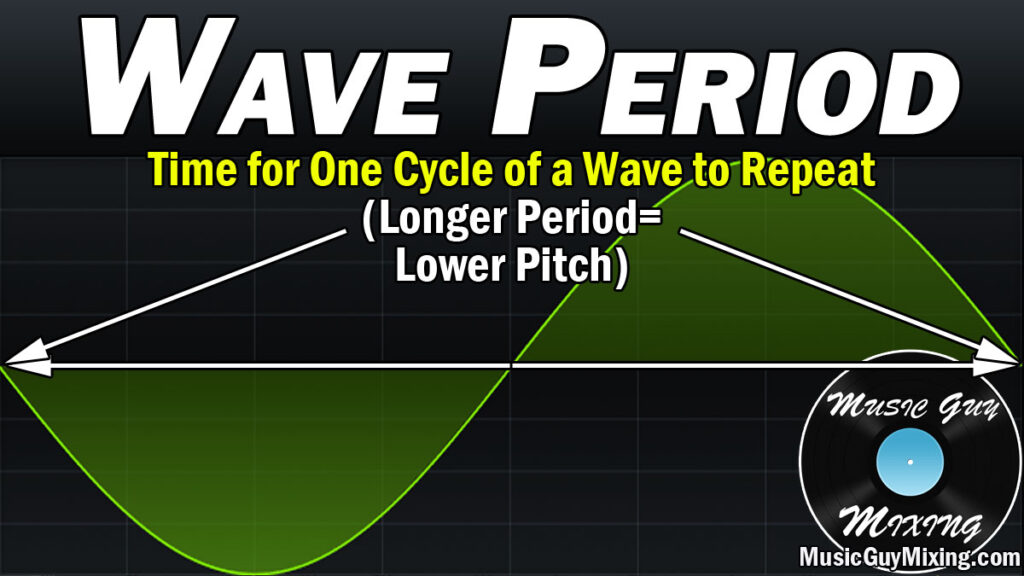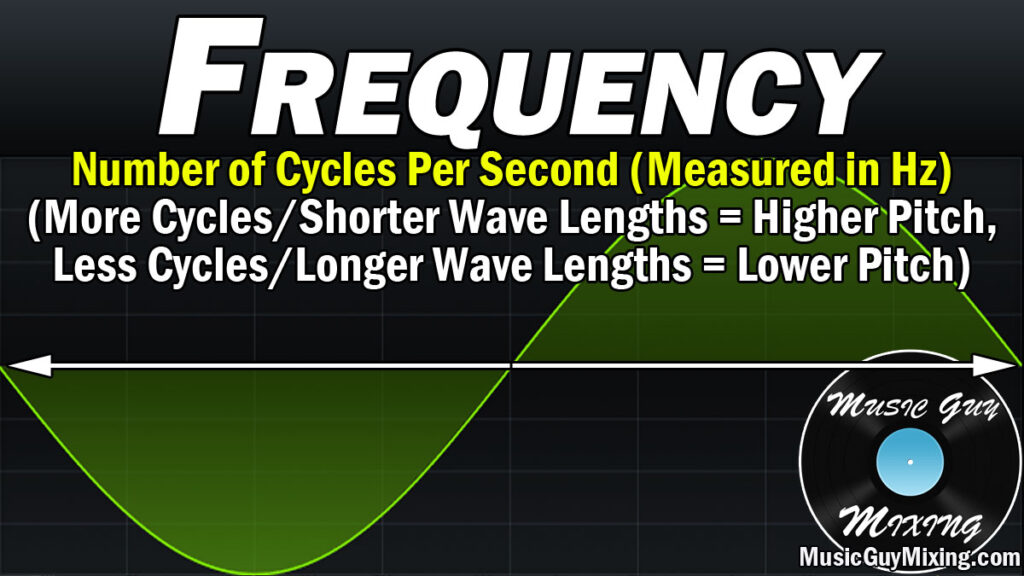This website is all about mixing tutorials and services, but sometimes I like to go back to basics. You can’t get much more basic than covering the anatomy of a sound wave. There are seemingly an infinite number of sound waves in every song we mix, so let’s talk about what gives every sound wave its unique shape and pitch by breaking down the parts of a sound wave.
Parts of a Sound Wave
I’ve put together this diagram using my favorite wavetable synthesis plugin, Serum from Xfer Records.
This provides a brief overview of the different parts of a sound wave before we delve mroe deeply into each one:

Now let’s break down each part one at a time in more detail to dissect what’s going on here.
You’ll note that many of these concepts are closely related and/or work together to have an effect on the other parts of a sound wave.
Wave Length
Let’s begin with the wave length which is literally the length of the wave itself.

Better said, the wave length is the distance between repeating points in a wave. When that initial point repeats, this counts as one cycle.
Wave Period
Another way of interpreting a sound wave’s cycle length is in time.
The wave period is the same as the wave length, it’s just measured in time. In this case, the wave period is the time it takes for one cycle to occur.

As we start to get into how the wave length or period affects the pitch as we interpret them, longer/slower wave cycles result in lower pitched sounds and vice versa.
Amplitude
The amplitude is the distance from the resting point (shown in the middle) to the crest (high point) or trough (low point) on a wave.

The strength of amount of sound pressure creates a vibration which displaces molecules, thus creating the amplitude of a sound wave.
Without getting too scientific here, the more energy a sound wave has, the greater the molecules are displaced and the larger the amplitude.
The greater the amplitude of a sound wave, the harder that wave hits our ear drums.
In other words, the greater the amplitude, the louder a sound wave is.
Frequency
The frequency directly correlates to the cycles we discussed earlier.

The frequency is the number of cycles which occur in a seconds. This is represented by Hz.
So when we say a sound is 100Hz, that means the the wave length repeats 100 times per second.
If a second is 10kHz, that means its wave length is repeating 10,000 times per second!
If you weren’t convinced that speed travels very quickly before, you certainly should be now.
Fun fact: if a sound moves too slowly or too quickly, like say cycling less than 20 times a second (20Hz) or more than 20,000 times a second (20kHz), the human ear cannot even perceive it.
Pitch
Speaking of which, pitch is a representation of how our brains perceive different frequencies.

The faster that sound wave cycles, which is again a product of wave length as it relates to time, measured in Hz, the higher pitched that sound wave will be perceived.
Parts of a Sound Wave
- The different parts of a sound wave determine how it will ultimately be perceived when it hits our ear drums.
- Wave length determines the length between the start and ending point for a single sound wave, its cycle.
- Wave period measures that cycle length in time.
- Amplitude is the “peak” of the sound wave. The greater the amplitude, the more energy behind that sound wave and the louder we’ll perceive it as it hits our ear drums harder.
- Frequency is a measurement of the number of cycles that sound wave makes per second. The number of cycles divided by 1 second is its frequency, measured in Hz. 100Hz means the sound wave cycles 100 times per second.
- Pitch is our ear’s and brain’s interpretation of that frequency.
- Longer waves with less cycles per second are interpreted as being lower pitched and vice versa.

Pingback: Bass Guitar Frequency Chart - Every Important Frequency to Know - Music Guy Mixing
Pingback: What is Clipping and How to Avoid It - Music Guy Mixing
Pingback: How to Mix Extremely Dynamic Vocals - Music Guy Mixing
Pingback: What is Soft Clipping and How It's Useful in Mixing - Music Guy Mixing
Pingback: Invert Phase in Mixing - What It Does and Why It's Not Always the Best Solution - Music Guy Mixing
Pingback: Sample Rate - What's the Best Sample Rate - Music Guy Mixing